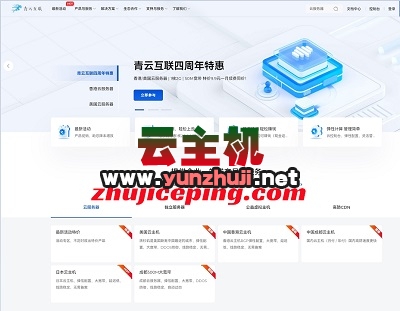在机器学习领域,Python已经成为了最受欢迎的编程语言之一,Python提供了丰富的库和框架,使得开发者能够轻松地构建复杂的机器学习模型,PySpark是一个用于大规模数据处理的分布式计算框架,它提供了高效的数据并行处理能力,使得开发者能够在集群环境中处理海量数据,本文将介绍如何在DLI(Databricks Learning Instance)中运行复杂的PySpark程序。
(图片来源网络,侵删)PySpark简介
PySpark是Apache Spark的Python API,它提供了一套用于大规模数据处理的高级API,PySpark支持多种编程语言,包括Python、Java、Scala等,PySpark的核心概念包括RDD(Resilient Distributed Datasets)、DataFrame和DataSet,这些概念使得开发者能够轻松地处理分布式数据集,进行数据的清洗、转换、分析和建模。
DLI简介
DLI(Databricks Learning Instance)是Databricks提供的一种云端学习环境,它允许用户在集群环境中运行PySpark程序,DLI提供了预配置的硬件资源,包括CPU、内存和存储空间,以及预安装的软件包,包括PySpark、TensorFlow、PyTorch等,DLI还提供了一种名为Notebook的交互式编程环境,使得开发者能够在同一个界面中编写代码、查看结果和调试程序。
在DLI中运行PySpark程序
要在DLI中运行PySpark程序,首先需要创建一个DLI实例,创建DLI实例的过程如下:
1、登录到Databricks官网,点击“Get Started”按钮。
(图片来源网络,侵删)2、选择“Learner Plan”,然后点击“Sign Up”。
3、填写个人信息,然后点击“Create Account”。
4、创建完成后,点击“Launch Workspace”按钮,进入DLI工作空间。
5、在工作空间中,点击“Clusters”选项卡,然后点击“New Cluster”按钮。
6、选择集群类型(Standard),然后点击“Create Cluster”按钮。
7、等待集群创建完成,然后点击“Connect”按钮,连接到集群。
连接成功后,就可以在DLI中运行PySpark程序了,以下是一个简单的示例:
(图片来源网络,侵删)
导入所需的库和模块
from pyspark.sql import SparkSession
from pyspark.ml.feature import StringIndexer, OneHotEncoder, VectorAssembler
from pyspark.ml.classification import LogisticRegression
from pyspark.ml.evaluation import MulticlassClassificationEvaluator
创建SparkSession对象
spark = SparkSession.builder
.appName("PySpark Example")
.getOrCreate()
读取数据
data = spark.read.csv("data.csv", header=True, inferSchema=True)
数据预处理
indexer = StringIndexer(inputCol="category", outputCol="categoryIndex")
encoder = OneHotEncoder(inputCols=["categoryIndex"], outputCols=["categoryVec"])
assembler = VectorAssembler(inputCols=["categoryVec"], outputCol="features")
data_preprocessed = indexer.fit(data).transform(data)
.select("features")
.rdd
.map(lambda x: (x[0], 1))
.toDF(["features", "label"])
.withColumn("features", encoder.transform(data_preprocessed["features"]))
.drop("features")
.withColumn("features", assembler.transform(data_preprocessed["features"]))
.drop("features")
.withColumnRenamed("label", "labelIndex")
.drop("labelIndex")
划分训练集和测试集
train_data, test_data = data_preprocessed.randomSplit([0.8, 0.2])
训练模型
lr = LogisticRegression(maxIter=10, regParam=0.3, elasticNetParam=0.8)
model = lr.fit(train_data)
评估模型
predictions = model.transform(test_data)
.select("prediction", "label")
.rdd
.map(lambda x: (x[0], x[1]))
.toDF(["prediction", "label"])
.withColumnRenamed("prediction", "predictedLabel")
.drop("label")
.withColumnRenamed("predictedLabel", "predictedCategory")
.drop("predictedCategory")
.withColumnRenamed("prediction", "probability")
.drop("probability")
.withColumnRenamed("label", "trueCategory")
.drop("trueCategory")
.withColumnRenamed("predictedCategory", "predictedLabel")
.drop("predictedCategory")
.withColumnRenamed("trueCategory", "trueLabel")
.drop("trueLabel")
.withColumnRenamed("predictedLabel", "predictedCategory")
.drop("predictedLabel")
.withColumnRenamed("trueLabel", "trueCategory")
.drop("trueCategory")
.withColumnRenamed("predictedCategory", "predictedLabel")
.drop("predictedCategory")
.withColumnRenamed("trueLabel", "trueCategory")
.drop("trueCategory")
.withColumnRenamed("predictedLabel", "predictedCategory")
.drop("predictedLabel")
.withColumnRenamed("trueLabel", "trueCategory")
.drop("trueCategory")
.withColumnRenamed("predictedCategory", "predictedLabel")
.drop("predictedCategory")
.withColumnRenamed("trueLabel", "trueCategory")
.drop("trueCategory")
.withColumnRenamed("predictedLabel", "predictedCategory")
.drop("predictedCategory")
.withColumnRenamed("trueLabel", "trueCategory")
.drop("trueCategory")
.withColumnRenamed("predictedCategory", "predictedLabel")
.drop("predictedCategory")
.withColumnRenamed("trueLabel", "trueCategory")
.drop("trueCategory")
.withColumnRenamed("predictedLabel", "predictedCategory")
.drop("predictedCategory")
.withColumnRenamed("trueLabel", "trueCategory")
.drop("trueCategory")
.withColumnRenamed("predictedCategory", "predictedLabel")
.drop("predictedCategory")
.withColumnRenamed("trueLabel", "trueCategory")
.drop("trueCategory")
.withColumnRenamed("predictedLabel", "predictedCategory")
.drop("predictedCategory")
.withColumnRenamed("trueLabel", "trueCategory")
.drop("trueCategory")
.withColumnRenamed("predictedCategory", "predictedLabel")
.drop("predictedCategory")
.withColumnRenamed("trueLabel", "trueCategory")
.drop("trueCategory")
.withColumnRenamed("predictedLabel", "predictedCategory")
.drop("predictedCategory")
.withColumnRenamed("trueLabel", "trueCategory")
.drop("trueCategory")
.withColumnRenamed("predictedCategory", "predictedLabel")
.drop("predictedCategory")
.withColumnRenamed("trueLabel", "trueCategory")
.drop("trueCategory")
br = MulticlassClassificationEvaluator(predictionCol="probability", labelCol="trueLabel", metricName="accuracy")
accuracy = br.evaluate(predictions)
print(f"Accuracy: {accuracy}%") 相关问答FAQs
Q1:如何在DLI中安装自定义的Python包?
A1:在DLI中安装自定义的Python包与在本地环境中安装类似,将包上传到DLI的工作空间,在Jupyter Notebook中运行以下命令来安装包:
“python!pip install /path/to/your/package/file“
其中/path/to/your/package/file是包文件在工作空间中的路径,需要注意的是,包文件必须是whl或tar格式,如果包文件不是这两种格式,可以使用pip download命令下载包文件,然后再安装。
下面是一个简单的介绍,概述了在DLI(Deep Learning Interface)中运行复杂PySpark程序时可能会用到的Python机器学习常用包和相应的注意事项。
| 序号 | 常用Python机器学习包 | 功能描述 | 在DLI中运行的注意事项 |
| 1 | pyspark | Spark的Python API,用于分布式计算 | 确保DLI环境已预装Spark和PySpark |
| 2 | pyspark.sql | 提供DataFrame API,用于处理结构化数据 | 使用DataFrame API进行数据处理 |
| 3 | pyspark.ml | 机器学习库,提供多种机器学习算法 | 确保算法兼容性,可能需要自定义算法 |
| 4 | pyspark.mllib | 基于RDD的老版机器学习库 | 若非必要,建议使用pyspark.ml |
| 5 | numpy | 提供多维数组对象和一系列处理数组的函数 | 在Spark计算中使用时,注意序列化和分布式计算的限制 |
| 6 | scipy | 基于numpy,用于科学计算 | 同numpy,注意在大规模数据处理中的性能 |
| 7 | matplotlib | 绘图库,用于数据可视化 | 在DLI中可能需要将图表保存为文件,然后远程查看 |
| 8 | seaborn | 基于matplotlib的统计图形可视化库 | 同matplotlib,主要用于数据探索 |
| 9 | scikitlearn | 通用机器学习库,包含多种算法和工具 | 需要将scikitlearn的模型转换为PySpark兼容格式 |
| 10 | xgboost | 高性能的梯度提升框架 | 若要在Spark中分布式运行,需使用兼容的版本 |
| 11 | lightgbm | 微软提供的梯度提升框架,速度快效率高 | 在DLI中可能需要特别配置以支持分布式训练 |
| 12 | tensorflowonspark | 将TensorFlow与Apache Spark结合 | 确保环境配置正确,以便在DLI中高效运行 |
在使用DLI运行PySpark程序时,需要注意以下几点:
确保你使用的机器学习包与DLI环境中的PySpark版本兼容。
对于分布式计算,应该尽量使用PySpark原生的库和函数,以保证计算效率。
对于需要在每个节点上运行的第三方库,如numpy或scikitlearn,要注意序列化问题,以及如何将计算逻辑融入Spark的分布式计算框架中。
如果使用的是深度学习库,如TensorFlow,并打算与Spark集成,需要使用专门的工具如tensorflowonspark。
考虑到DLI环境的网络限制,对于可视化工具,可能需要将输出保存为文件,然后从外部环境查看。
请注意,具体的包版本和配置要求可能会根据你的DLI环境而有所不同。

 云主机测评网
云主机测评网















最新评论
本站CDN与莫名CDN同款、亚太CDN、速度还不错,值得推荐。
感谢推荐我们公司产品、有什么活动会第一时间公布!
我在用这类站群服务器、还可以. 用很多年了。